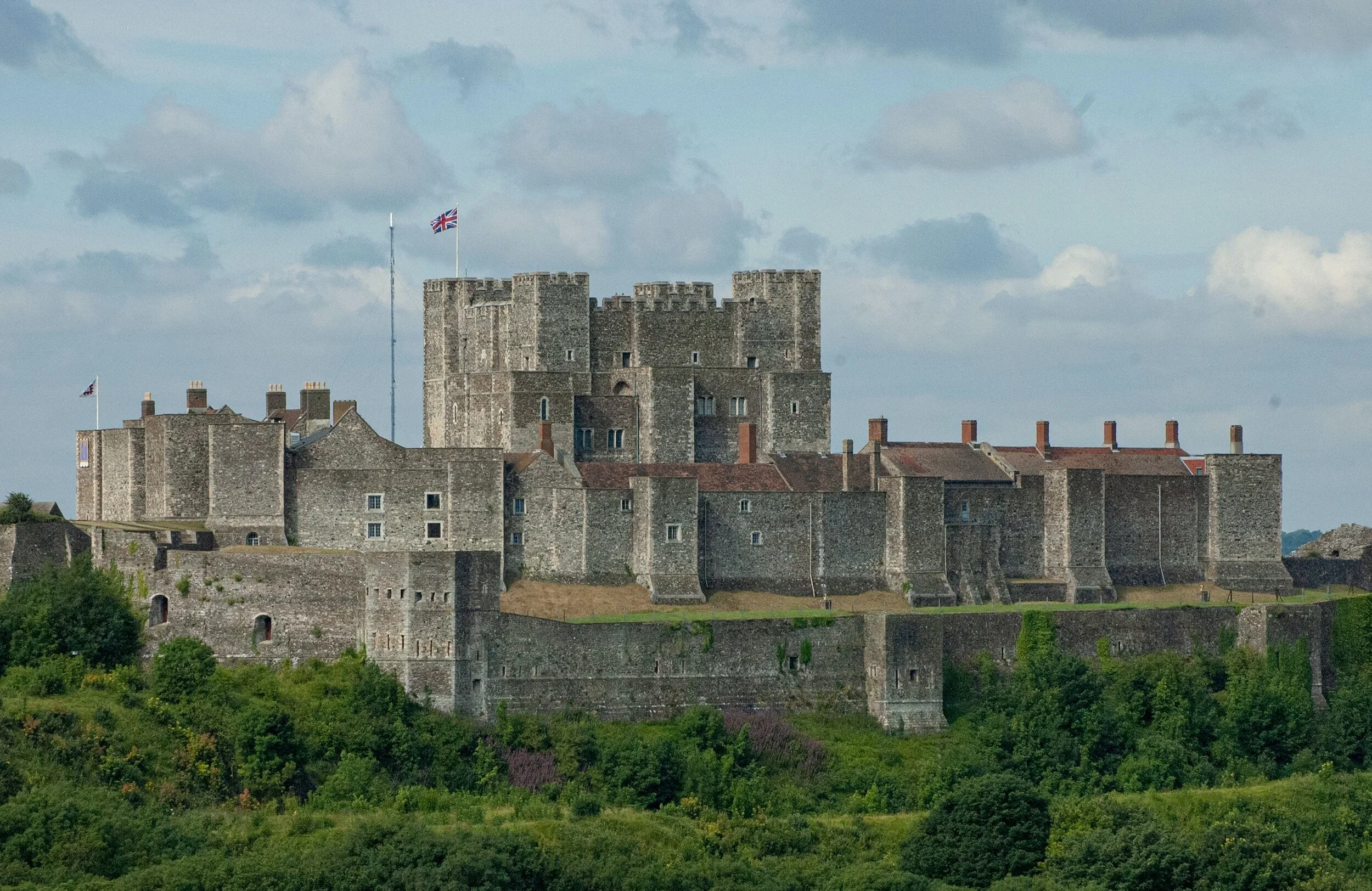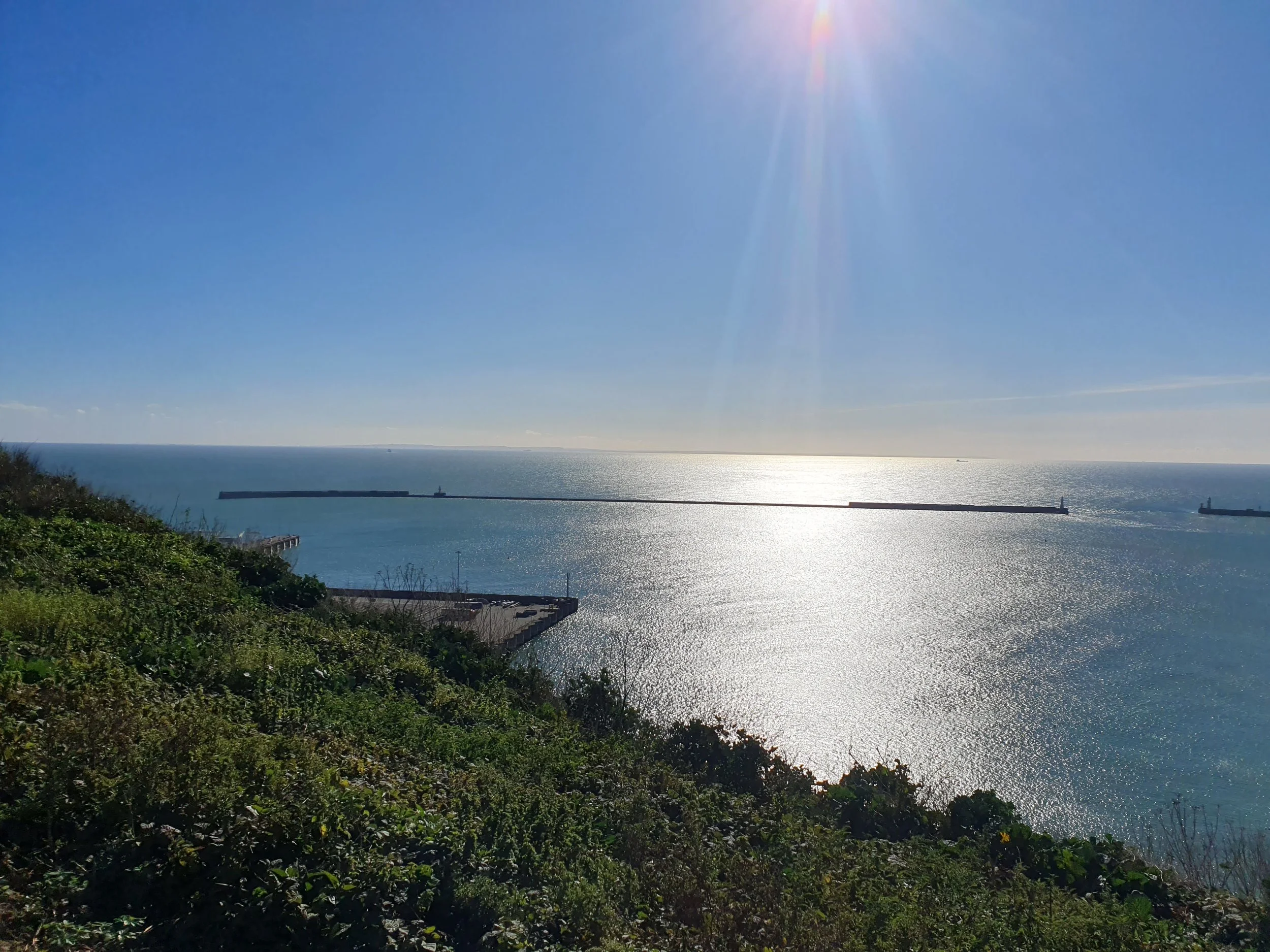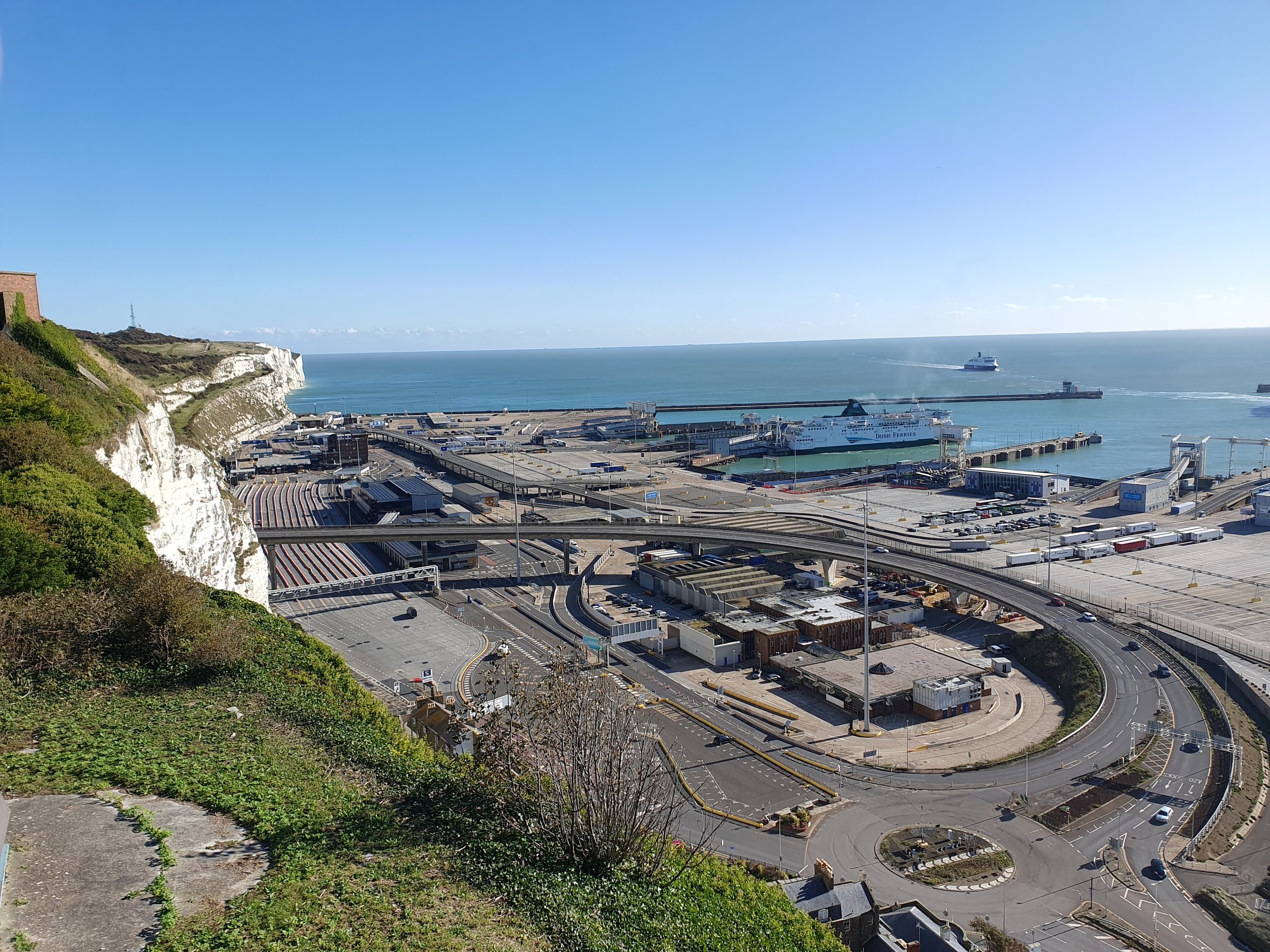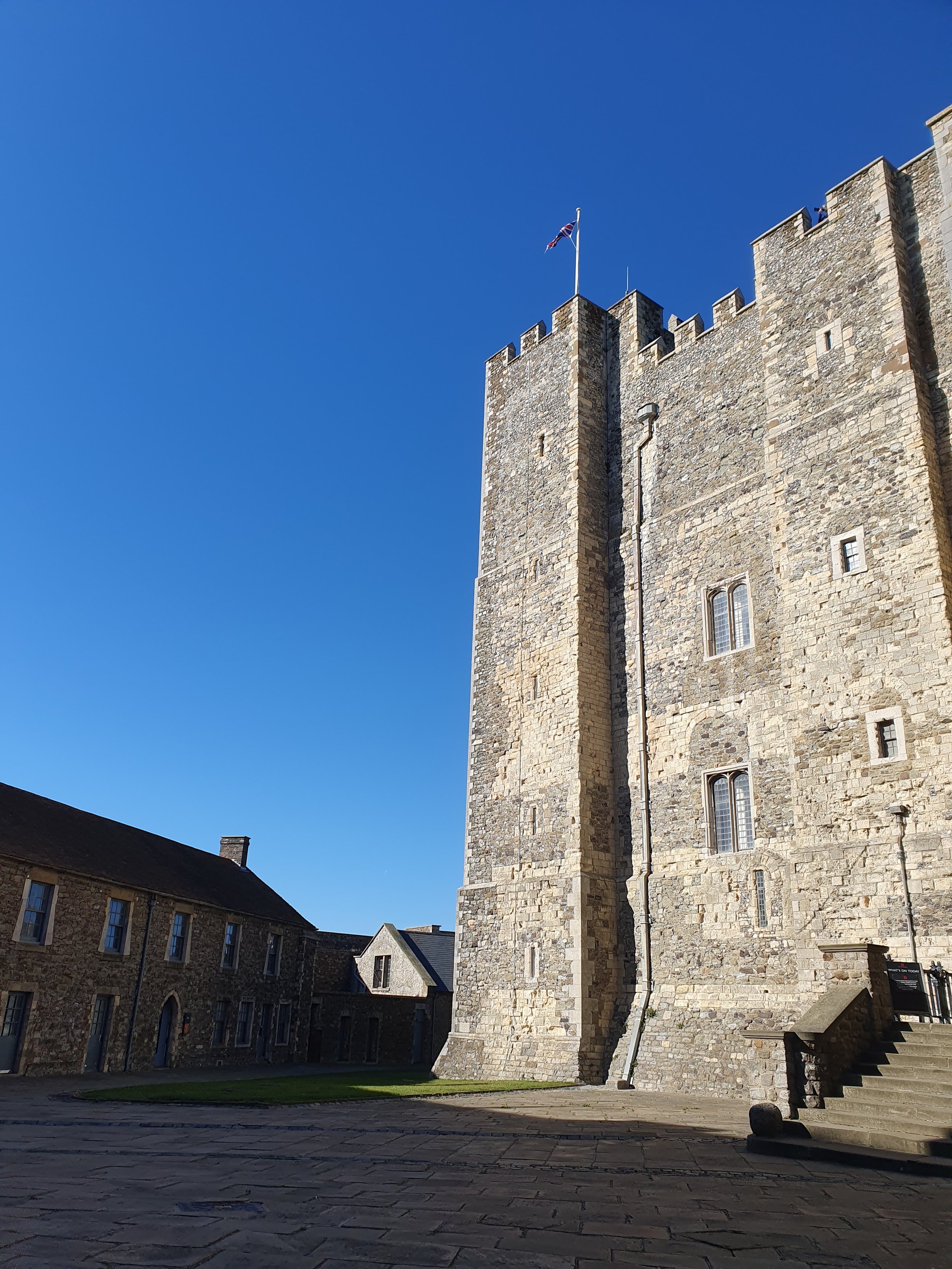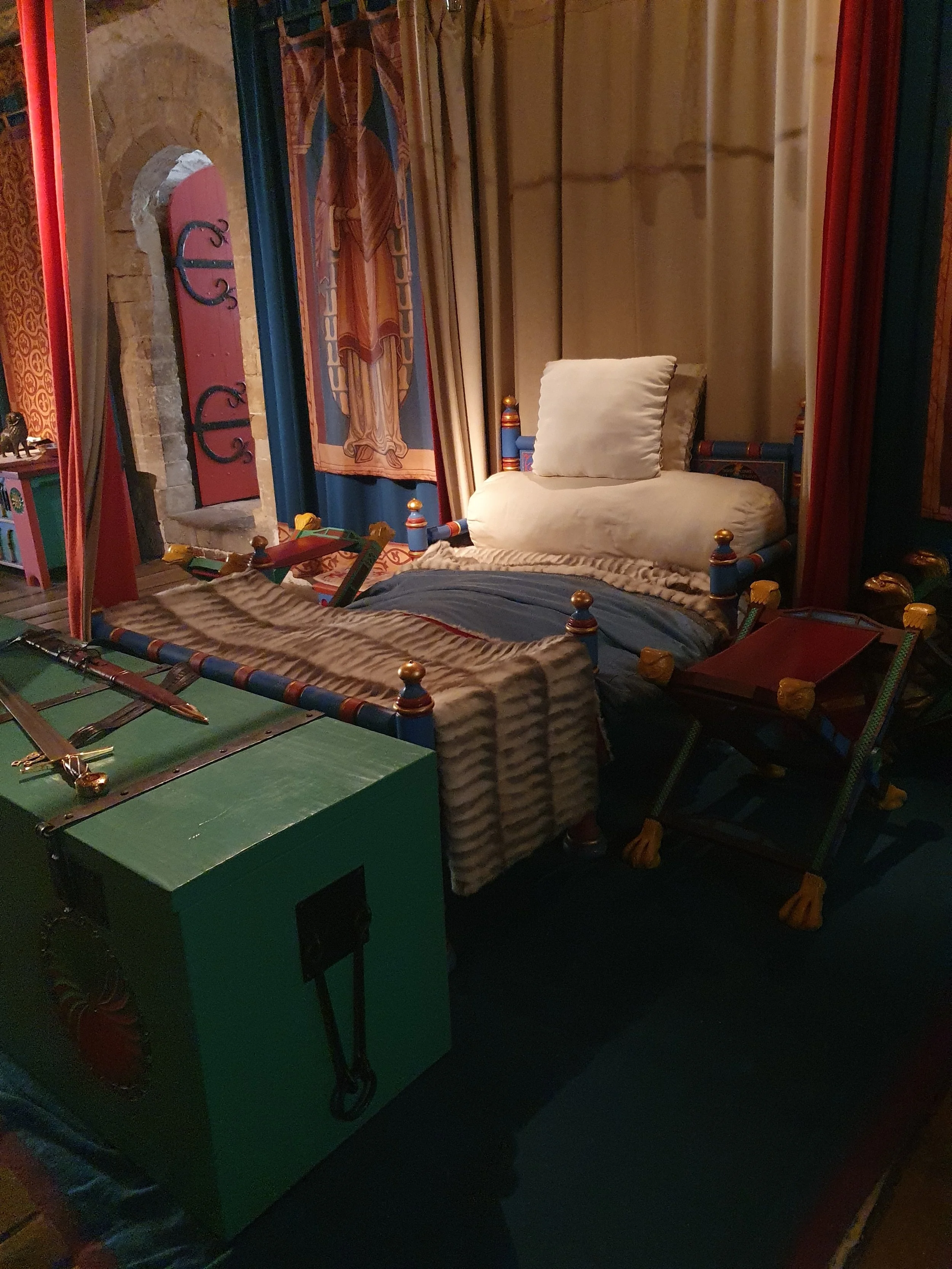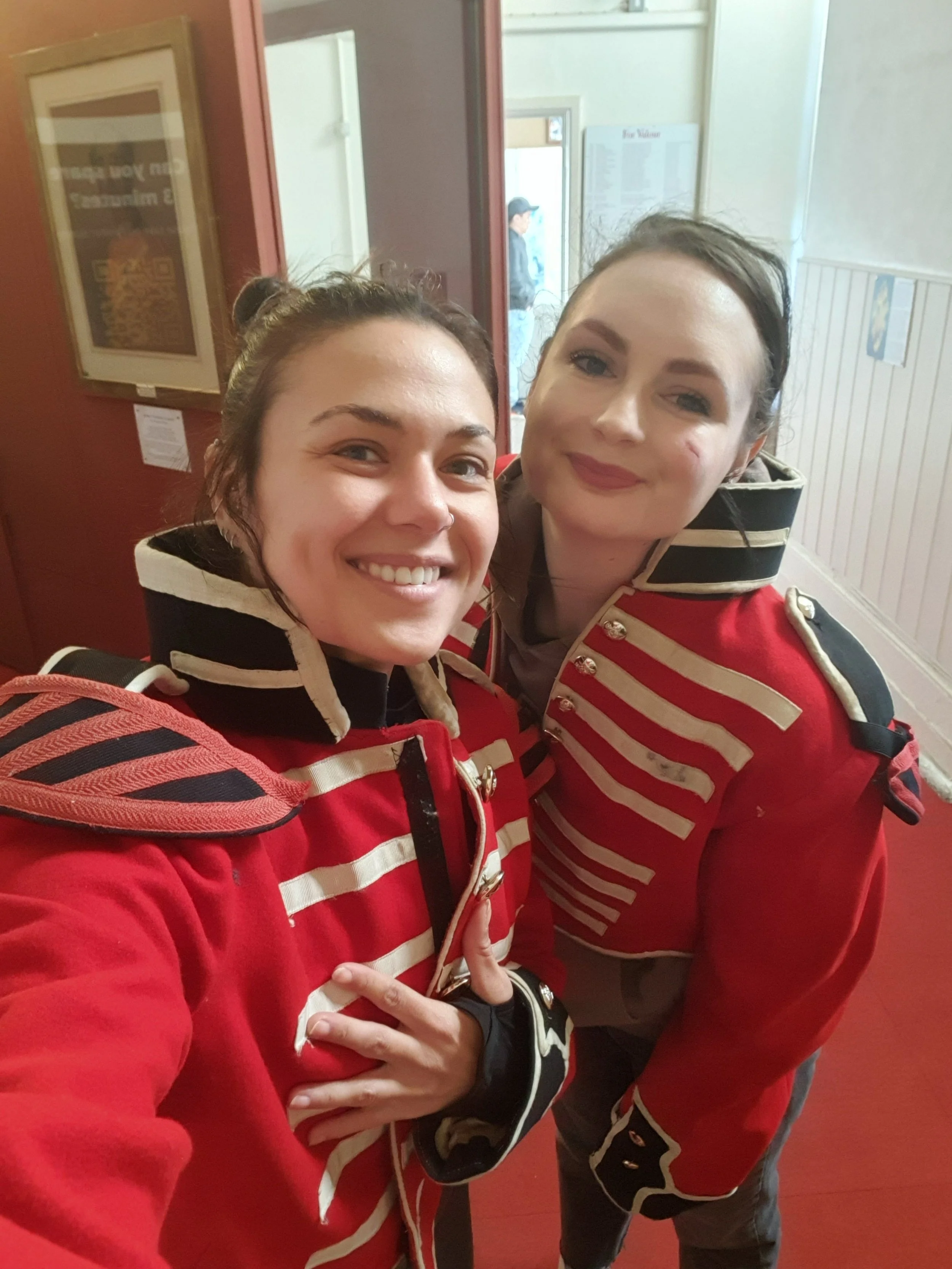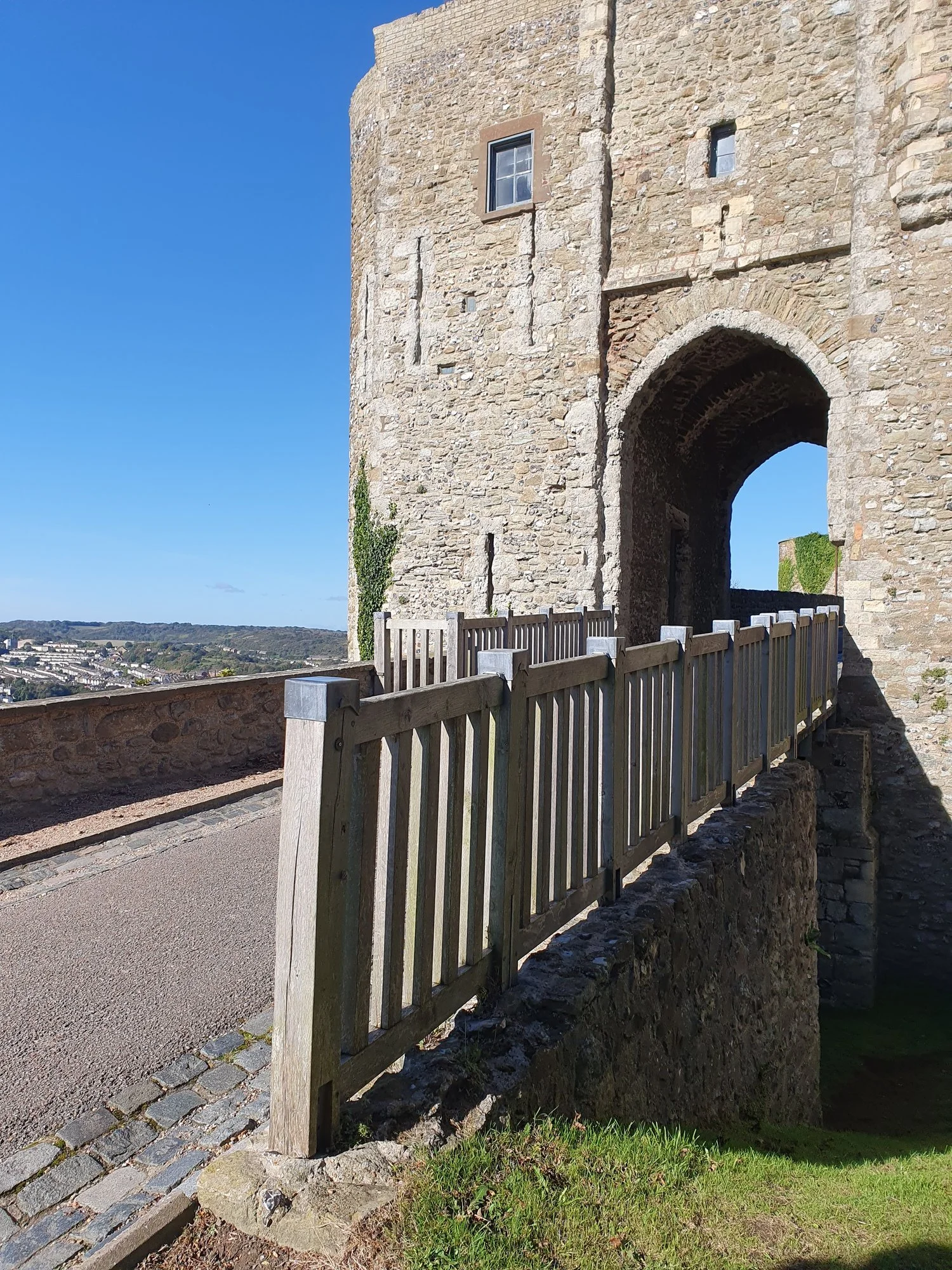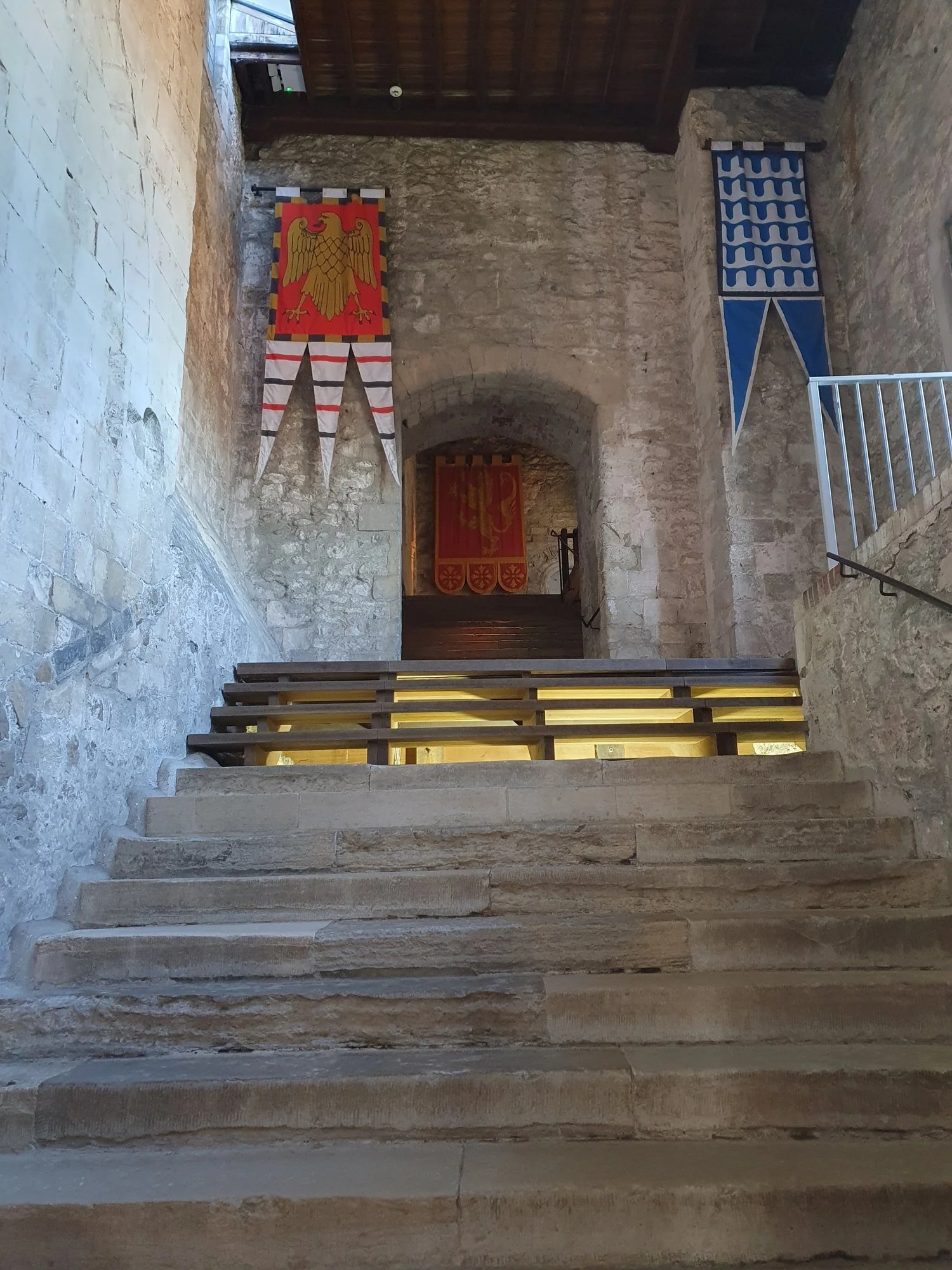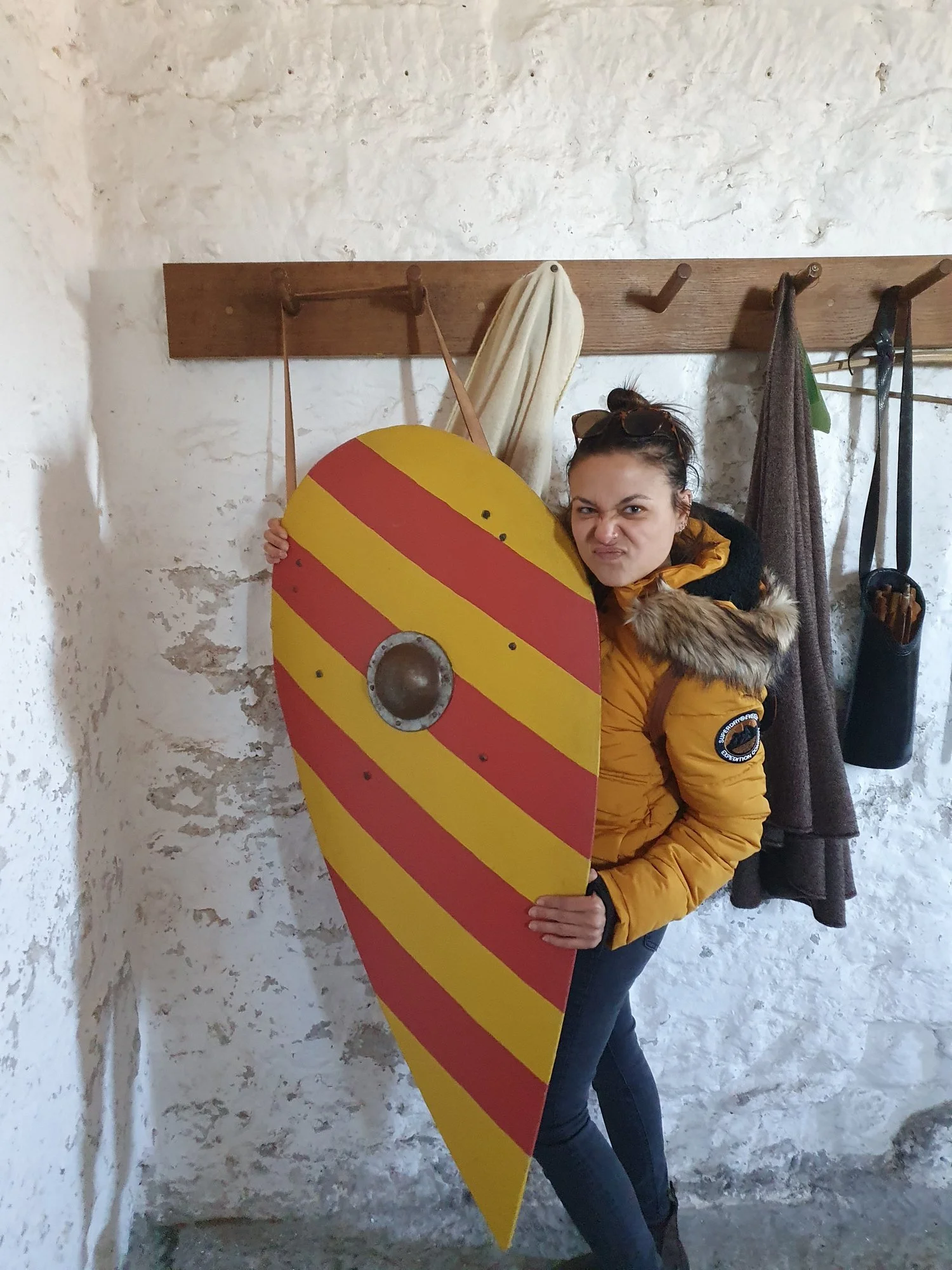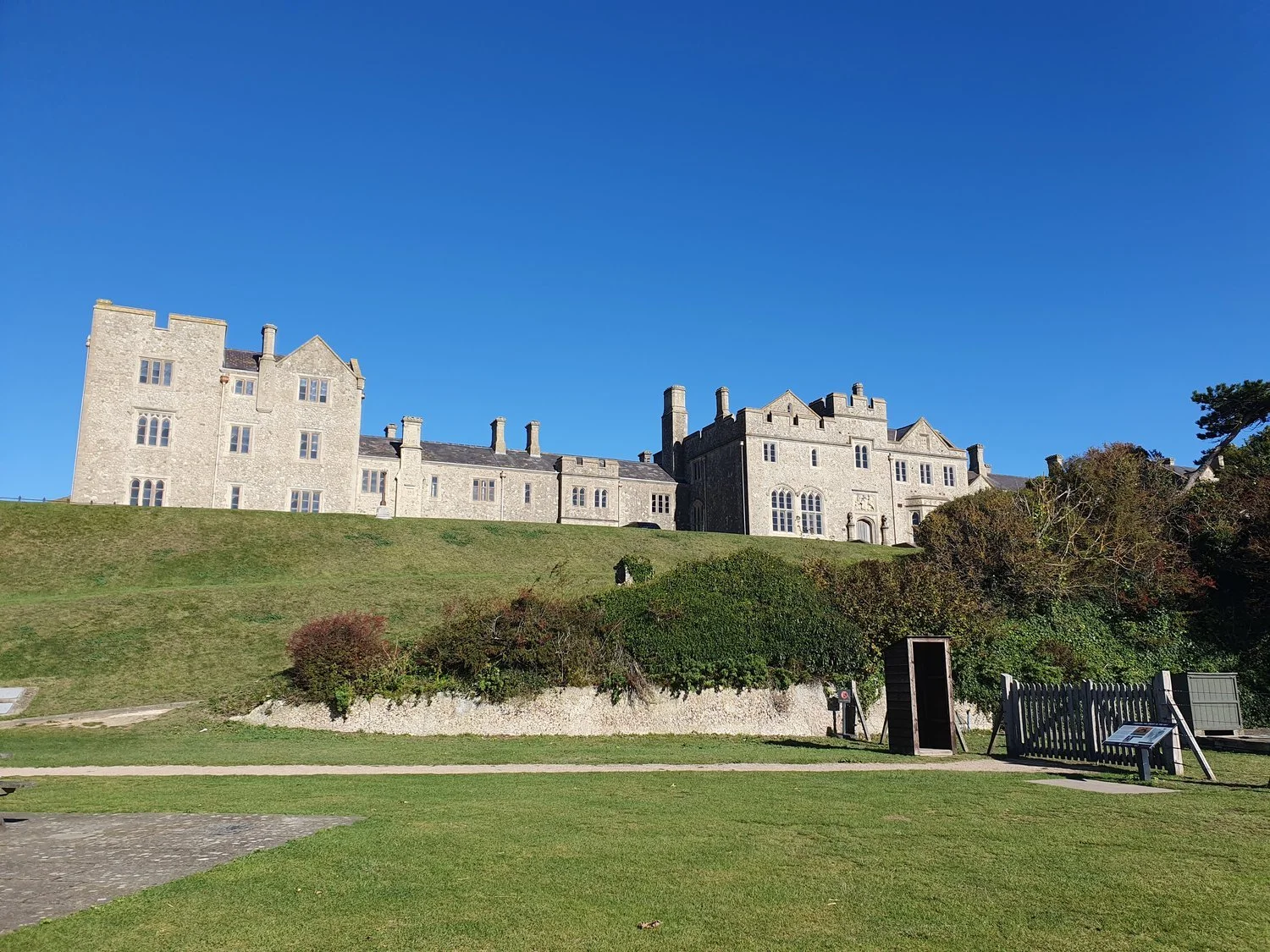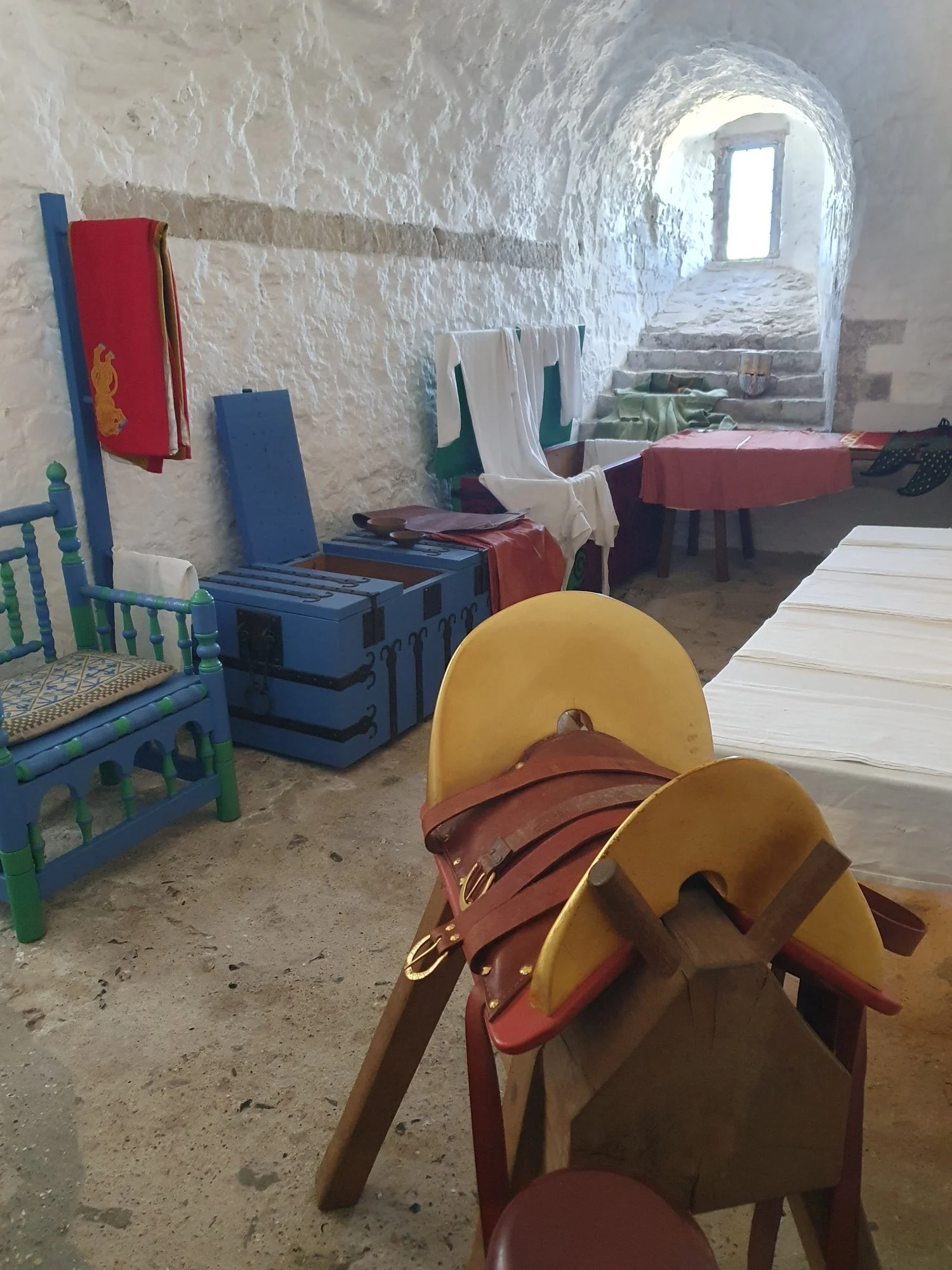A Day Out at Dover Castle
A few weeks back, I enjoyed a day out at Dover Castle in Dover, Kent with my friend Amy.
You may remember Amy from my 3 Days in Dublin blog.
The United Kingdom is well known for its castles. It doesn’t really matter where you are or which country you’re in (Scotland, Wales, Northern Ireland etc), you’re bound to stumble across a castle at some point. And Kent is no different. In fact, Dover Castle is one of the most significant castles in British history.
But more on that later…
Dover Castle is an English Heritage site, so luckily for me, English Heritage members (and one guest) can get in for free, which is what Amy is.
Perched on a hilltop, the castle has a commanding view of the English Channel and the White Cliffs of Dover. The day we visited, the weather was absolutely stunning, albeit a little cold. The skies were bright and so clear that we could see all the way across the sea to France.
When we arrived at the castle, the first port of call was the ticket office. We were issued with wristbands and a map of the castle then had free reign to visit the grounds. I have visited Dover Castle many times over the years, it’s very close to my hometown so it has always been a great place for a school trip or family day out.
It’s nice to know that the castle hasn’t changed!
The history of Dover Castle
Dover Castle has quite an extensive history so I’m going to try my best to summarise it -
According to experts, the Castle's grounds may date back to the pre-Roman Iron Age. The irregular shape and massive enclosed area of the castle grounds are not typically medieval, more closely resembling a hillfort. The Romans built an octagonal tower-like lighthouse (pharos) on Castle Hill around 43 AD, with another on the opposite hill, the Western Heights. These lighthouses supported fire beacons to act as navigation lights for ships approaching the river mouth. The pharos was later reused for the church of St Mary in Castro as a chapel and bell tower which can still be seen today.
In 1066 after the Battle of Hastings (which if you’re anything like me, you remember the year from History class but nothing else), William the Conqueror came to seize the port. Then in 1179-89, Henry II created the most advanced castle design seen in Europe at the time. The very design you see today. He was responsible for adding The Castle Keep, also known as the Great Tower.
The reconstruction might have been due to the newly established pilgrimage path to Canterbury, where Thomas Becket’s shrine is, and Henry's desire to show off for his esteemed guests who were making the journey.
In 1914, Britain declared war on Germany (WWI) and the castle served as the command centre for the Royal Navy's Dover Patrol, which was stationed in Dover Harbour to guard the Dover Strait.
When World War II broke out in 1939, Dover Castle was put back into service. It was used as the vice-admiral's bomb-proof offices which could oversee the naval station, and as the headquarters for army forces coordinating anti-aircraft and coast artillery defences.
Tunnels were constructed in 1942 and converted into an underground medical facility. Then in 1943, a second set of tunnels was built and utilised as a Combined Operations Centre.
For a more in-depth look at Dover Castle’s history click here
Amy and I decided to visit the war tunnels first, and as we got there we became two of the last stragglers to join the tour of the underground hospital. The tour itself hasn’t changed much since the last time I did it but I have to say, the tour guide herself was fantastic. Unfortunately, I didn’t get her name but she was well-spoken, her voice was clear (which must have been beneficial for a lot of the tourists from different countries) and being an ex-nurse, she inputted her own experience into the tour which made it a bit more personable. In fact, all the tour guides we had during our Dover Castle day out were great and seemed to show genuine passion which made it even more enjoyable.
The underground hospital tour takes roughly only 15-20 minutes or so, with a tour running approximately every 30 minutes. You get to experience what life really would have been like in the hospital with dark unreliable lighting, a musty atmosphere and various rooms to explore with many different instruments. Some you’d recognise, some you won’t. Overall it’s a really good tour and a chance to step back in time so I’d definitely recommend adding it to your itinerary for your Dover Castle day out.
We were a little too late to catch the first Operation Dynamo tour in the Wartime Secret Tunnels so we thought we’d go check out the Great Tower whilst we waited for a less busy tour time. Just so you know, the Great Tower has a lot of steps and the hallways can be tight. So it’s not for the faint-hearted but it is worth it to see the grandeur of the castle and experience the (wealthier) medieval way of life.
As you walk through the bedroom, you’ll notice that the beds in the Great Tower are very small, like they could be for children. But they are in fact for adults. I don’t know how true this is but apparently, they used to sleep sitting upright because they feared the devil would take their soul… I mean, each to their own. But a more practical reason would be because of the fires being constantly lit, it would have been harder for people to breathe lying down.
You can climb all the way to the top of the tower which is a great vantage point to take in the spectacular view. Not so great when it’s blowing a gale outside and you feel like you’ll be blown off the roof!
The only bit of the castle that I don’t like, and I blame this on a Dover Castle ghost hunt tour I once participated in, is the kitchen. Obviously, all the display meats and bread are fake but the hanging carcasses that are displayed make me feel weird! I’d clearly never be able to work in an abattoir…
As we were leaving the kitchen we saw a lady dressed up in full medieval garb pretending to stir one of the display pots. Both Amy and I turned to each other thinking it was so strange to have an actor in the kitchen but nowhere else in the castle. Why just one section? But as we left, we saw the rack of dressing up clothes for visitors. Shortly after, the lady came over with the dress around her waist ready to take off. This gave us full confidence to dress up ourselves. Not right there in medieval clothes, but in soldier uniforms when we visited the Princess of Wales's Royal Regiment and Queen's Regiment Museum.
This museum documents the history of the Princess of Wales's Royal Regiment, from its inception in 1572 to its most recent deployments in the twenty-first century. It is located in the keep of Dover Castle and exhibits a decent collection of artefacts from throughout the years. There are also story retellings of bravery and sacrifice from one of England's oldest regiments. Plus, if you’re into it, there’s also a little digital shooting range you can try your hand at.
It was roughly about here that we decided to take a break and have lunch at the NAAFI Restaurant before going back to the tunnels to check if the Operation Dynamo tour had availability. The restaurant is located in the 1868 Regimental Institute and was once used by soldiers stationed at Dover Castle. It sells both hot and cold food, drinks and snacks, with vegetarian, vegan, dairy-free and gluten-free options available. There are some great views down to the wartime tunnels, the port of Dover and across the Channel if you’d rather sit outside on the picnic tables.
What was Operation Dynamo?
Operation Dynamo was the rescue operation carried out by the Royal Navy. Vice Admiral Bertram Ramsay and his small crew at Dover Castle oversaw it. Ramsay and his team began preparing and securing ships to evacuate the Allied soldiers on May 19, 1940. They received an order to implement their plans on May 26. The wartime tunnels served as the central command post for the evacuation.
Operation Dynamo: Rescue from Dunkirk uses historical newsreels, audio, and special effects to bring the terror and suspense of the evacuation to life. The tour takes you through different parts of the original Army headquarters, including the communications and operations rooms, which are still decorated in Second World War-era regalia. It lasts for almost an hour and starts every fifteen to twenty minutes. Sadly, there’s no Tom Hardy or Cillian Murphy in the Dunkirk films shown in the tour.
Once the tour has finished you can take a visit to the Secret Wartime Tunnels Tearoom. There’s more to it than just cake though! There’s a great little gift shop full of Dover Castle merchandise, war medal replicas, the White Cliffs of Dover stocking fillers, mugs, books, and even varsity-inspired clothing. Actually, it was here that we gave other tourists a good laugh by reading a children’s book out loud. It was a rendition of ‘Where’s Wally?’ but with evil dictators like Hitler and Goebbels instead. In the book, you have to scan different war scenarios looking for these tyrants, which resulted in us both enthusiastically shouting ‘There’s Hitler!’ every time we found him. I’ve tried looking for this book online but no such luck yet.
And there ends a great day out at Dover Castle!
Once again, please check out the official English Heritage website for everything you need to know about planning your day out to Dover Castle.
A few more pictures of our day…


